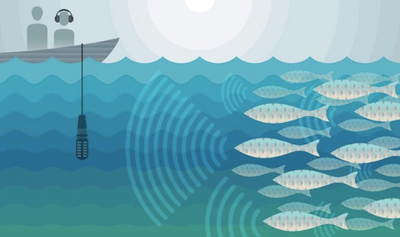The loud love calls of the male corvina, a popular commercial fish in Mexico’s Gulf of California, could help save the species from unsustainable harvesting, according to a new study.
The entire adult population of Gulf corvina, numbering more than 2 million fish, reproduces each spring in large spawning aggregations. Marine researchers used a hydrophone to capture the male corvina’s mating calls in an effort to estimate population size, and were surprised at the deafening sound — 192 decibels, loud enough to damage a human’s eardrums on land. “It’s louder than a rock concert,” said co-author Brad Erisman of the University of Texas Marine Science Institute. “It’s louder than standing less than a meter from a chain saw.”
Although the mating calls help fisherman more easily locate the fish for harvesting, the researchers said the sounds could also be used to inexpensively and accurately estimate the size and location of spawning aggregations in order to help fisheries managers design effective management practices and monitor the ongoing health of a fishery.
Added Erisman: “The fishers are by no means the enemy here. They’re actually the ones who have provided us with all the information and access to the resource, and they’re the ones most interested in sustainability.”
The researchers said the acoustic survey technique could be applied to other fish species that make courtship sounds, including cod, groupers, croakers, and the endangered totoaba, which is endemic to the Gulf of California.
